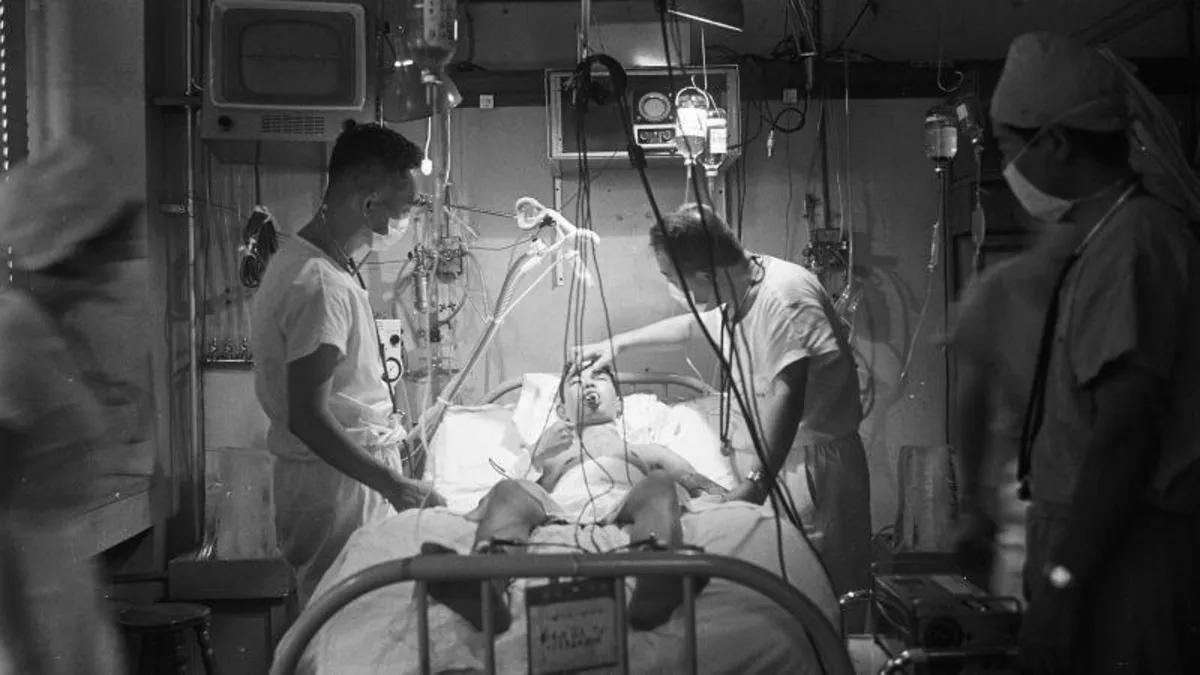
On Sunday, May 18, at 8 p.m. ET/PT, tune in to CNN to watch “Dr. Sanjay Gupta Reports: Animal Pharm.” In recent years, organ transplants have become routine, with more than 48,000 organ transplants performed in the United States alone last year. However, just fifty years ago, these life-saving procedures were deemed experimental. Today, we are witnessing groundbreaking advancements in xenotransplantation—the process of transplanting animal organs into humans—which may pave the way for saving countless lives. This article explores the history and evolution of organ transplants, culminating in the emerging field of xenotransplantation.
The idea of xenotransplantation has been around for centuries. In the early 20th century, Dr. Mathieu Jaboulay made significant strides in this field. In 1906, in Lyon, France, he performed one of the first documented attempts by attaching a pig kidney to a 48-year-old woman’s elbow. This location was chosen for its accessibility, and while the kidney did produce urine—a feat that even some human transplants of the time could not achieve—it ultimately failed, leading to the patient’s death from an infection. Dr. Jeffrey Stern from the NYU Langone Transplant Institute highlights the historical significance of having a reliable source of organs, stating that the use of animals for organ donation could serve as an ideal solution.
In 1954, Dr. Joseph E. Murray achieved a monumental milestone by performing the world’s first successful human organ transplant at Brigham and Women’s Hospital in Boston. He transplanted a kidney from 22-year-old Ronald Herrick to his identical twin brother, Richard. This unique situation meant Richard’s immune system recognized the new organ as its own, preventing rejection. Dr. Stefan Tullius, chief of the Division of Transplant Surgery at Brigham and Women’s Hospital, noted the importance of this event in demonstrating that with the right donor-recipient relationship, organ transplants could be effective. However, this was only the beginning, as the field faced numerous challenges related to immune system rejection.
In the 1960s, Dr. Murray's research with dogs revealed that immunosuppressive drugs could enhance the success of organ transplants. In April 1962, he performed the first transplant from a deceased donor into an unrelated human, using the immunosuppressant azathioprine. This patient survived for over a year, and the survival rate improved further with the introduction of steroids. By June 1963, Dr. Guy Alexandre conducted the first transplant from a brain-dead donor, a groundbreaking but controversial procedure at the time. The recognition of brain death as a criterion for organ donation in 1968 significantly expanded the organ donor pool, allowing more lives to be saved.
Transplant doctors initially focused on kidneys, as humans have two and can survive with just one. They later expanded their research to other organs, leading to Dr. Christiaan Barnard's first heart transplant in 1967. Despite early setbacks, including the patient’s death from a lung infection, subsequent patients experienced significantly longer survival times. By the 1990s, the introduction of advanced immunosuppressants transformed the landscape of organ transplants. Landmark procedures, such as the first surgical hand transplant in 1998 and the first full-face transplant in 2010, further exemplified the progress made in this medical field.
In 1984, Dr. Leonard Bailey attempted to save the life of Stephanie Fae Beauclair, known as Baby Fae, by transplanting a baboon heart due to her severe heart condition. Although she survived only 21 days post-surgery, the case highlighted the urgent need for infant organ donations and revived interest in cross-species transplants. However, the medical community soon recognized that while primates were genetically similar to humans, they posed significant risks, leading researchers to pivot towards pigs as a more viable option for organ donation.
After a period of stagnation, the advent of the CRISPR gene-editing tool in the early 2000s revolutionized xenotransplantation. This technology enabled scientists to modify the pig genome to enhance compatibility with humans, reducing the likelihood of organ rejection. Combining CRISPR with cloning techniques allowed researchers to produce genetically uniform pig donors, opening new avenues for organ transplants. Dr. Tullius considers these developments revolutionary, not just for transplantation but for various medical fields.
In September 2021, a significant milestone was reached when a genetically engineered pig kidney was transplanted into a brain-dead patient at NYU Langone. This procedure lasted 54 hours, during which the kidney's function was monitored. Encouragingly, the kidney performed comparably to a human donor organ, signaling a promising future for xenotransplantation. Dr. Robert Montgomery, who was involved in the procedure, emphasized the importance of this advancement in understanding organ rejection.
On January 7, 2022, surgeons at the University of Maryland School of Medicine successfully performed the first xenotransplant into a living person. David Bennett, who was reliant on an artificial lung and heart bypass machine, underwent this experimental procedure under the FDA’s compassionate use pathway. Although he lived for only two additional months, this groundbreaking surgery provided valuable insights for future transplant procedures. Dr. Jayme Locke expressed hope that xenotransplantation will soon turn from a dream into reality for patients in need.
Geneticist Dr. David Ayares describes United Therapeutics’ innovative approach to organ transplantation as “multiple shots on goal.” This summer, the company will initiate the first FDA clinical trial of xenotransplantation, moving beyond one-off compassionate use procedures to multicenter trials. However, the challenge of organ shortages remains. Montgomery envisions a future where personalized organs are created, potentially eliminating the need for immunosuppression. This could involve using pig organs as scaffolding for human stem cells or even 3D-printing custom organs tailored to individual needs.
As we look ahead, the field of xenotransplantation holds immense promise for transforming organ donation and transplantation. The potential to save lives and improve the quality of life for countless patients is not just a dream but a rapidly approaching reality.